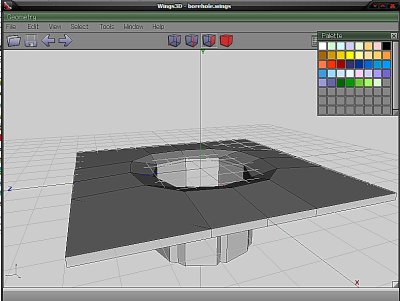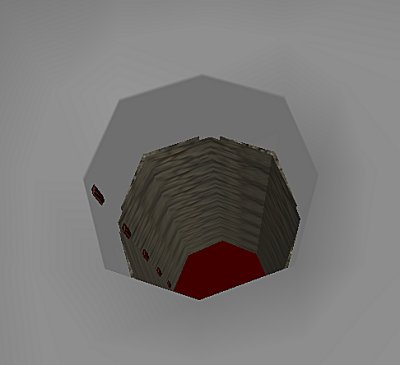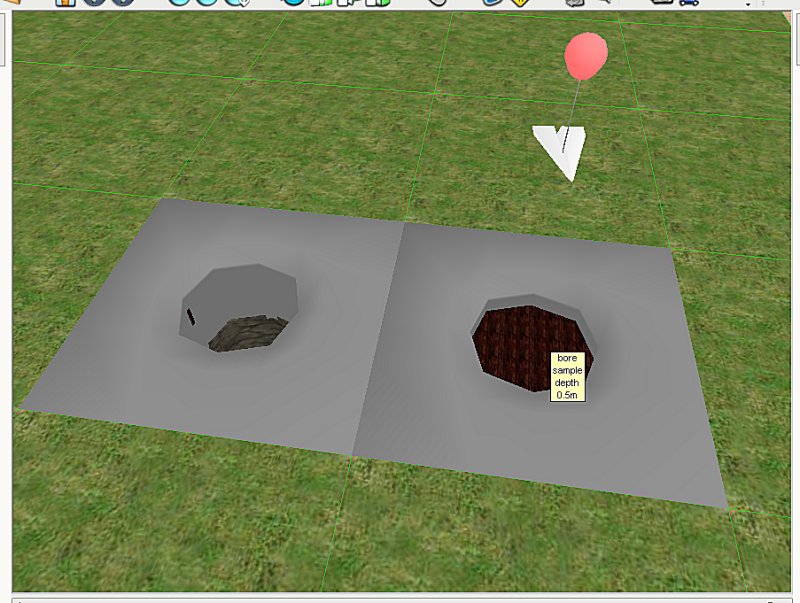Boring
 Now one activity cybernauts will have to complete is a collection of bore-samples, detecting mineralization according to depth. The need arose for a scenic object that performs the function of a bore-hole cap.
Now one activity cybernauts will have to complete is a collection of bore-samples, detecting mineralization according to depth. The need arose for a scenic object that performs the function of a bore-hole cap.
I fired up wings, experimented with scale to determine the appropriate size to fit an entire grid point, then sculpted a hole that tapered so it would join to a tube primitive I made earlier.
Testing their placement was fairly straight forward – with the scale correct, they move and position modularly, and it allows me to manage how they will manage taking readings at depth – I thought about sliding core samples with meta information that would slide out of the way to reveal a deeper sample.
If the movement is not “global” then it will appear to move ONLY to the cybernaut that clicks on it, meaning multiple students can work on the same spot at the same time without interfering with each other – an important consideration if there is a class worth in at a time.
 Working out how to texture, colour and so on, then on to layout of the mineral bed; progress being made.
Working out how to texture, colour and so on, then on to layout of the mineral bed; progress being made.
On a purely practical matter, vestiges of the sample are still visible when they are rolled out of the way, so students can still access the data stored in them (you can see the brown fragments still emergent from the shaft wall) .
I think this will work well – what do you think?
